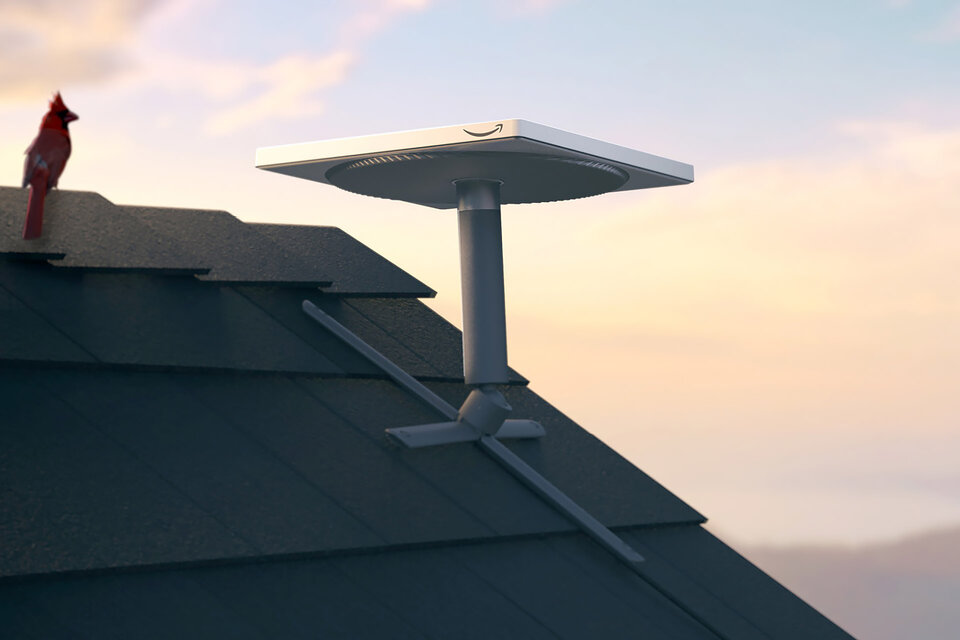As the world becomes more connected, the demand for reliable and affordable internet services continues to grow. Amazon’s Project Kuiper, an ambitious satellite constellation project, aims to bridge the digital divide by providing global broadband coverage. In this report, we’ll explore the objectives, dimensions, timeline, and comparison with SpaceX’s Starlink system.
Objective: Project Kuiper’s primary goal is to deliver low-latency, high-speed broadband services to unserved and underserved communities worldwide. By launching a constellation of satellites into Low Earth Orbit (LEO), Amazon plans to provide coverage to rural areas, remote regions, and developing countries where traditional infrastructure has failed to meet the growing need for connectivity. Additionally, Project Kuiper aims to support various industries such as emergency response, maritime communications, and aviation, further emphasizing the importance of reliable internet access.
Dimensions: Amazon’s Project Kuiper constellation will consist of 3,236 satellites deployed in LEO, at altitudes ranging from 590 km to 630 km. The satellites will be distributed across three orbital shells: 784 satellites at 590 km, 1,296 satellites at 610 km, and 1,156 satellites at 630 km. This massive network of satellites will work in unison to provide continuous, high-speed broadband coverage across the globe.
Timeline: In April 2020, the Federal Communications Commission (FCC) granted Amazon approval to deploy its Project Kuiper satellite constellation. While Amazon has not announced a definitive timeline for the project, they have committed to launching at least 50% of the constellation by 2026 and completing the deployment by 2029 to meet FCC requirements.
Comparison with Starlink: Project Kuiper is often compared to SpaceX’s Starlink, another LEO satellite constellation designed to provide global broadband coverage. While both projects share similar goals, there are key differences between the two:
- Number of satellites: Starlink’s constellation is larger, with plans to deploy nearly 12,000 satellites, compared to Project Kuiper’s 3,236 satellites. SpaceX has already launched over 1,700 satellites as of September 2021, giving them a head start in the race for global coverage.
- Parent companies: Project Kuiper is backed by Amazon, a global technology giant with extensive resources and experience in various industries, while Starlink is a venture by SpaceX, a leader in the space industry known for its innovative rocket technology.
- Progress: Starlink has already initiated a beta service in select areas and continues to expand its coverage. Project Kuiper, on the other hand, has not launched any satellites yet and is in the earlier stages of development.
Conclusion: Amazon’s Project Kuiper is an ambitious initiative to provide high-speed, low-latency broadband services to millions of people worldwide. Although the project faces stiff competition from SpaceX’s Starlink, its success could revolutionize the way we access the internet, foster economic growth, and empower communities around the globe. With the world’s eyes on these satellite constellations, it remains to be seen how they will shape the future of global connectivity.
| Feature | Starlink | Project Kuiper |
|---|---|---|
| Parent Company | SpaceX | Amazon |
| Number of Satellites | ~12,000 (planned) | 3,236 (planned) |
| Satellites Launched | >3,500 (as of Mar 2023) | 0 (as of Mar 2023) |
| Operational Altitude | 540-570 km | 590-630 km |
| Orbital Shells | Multiple (mainly 3) | 3 |
| Coverage Area | Global | Global |
| Network Type | Low Earth Orbit (LEO) | Low Earth Orbit (LEO) |
| Bandwidth | ~100 Mbps (estimated) | Not yet disclosed |
| Latency | 20-40 ms (estimated) | 20-40 ms (estimated) |
| Deployment Progress | Beta service available | Development stage |
| User Terminal Cost | ~$499 (Starlink Kit) | Not yet disclosed |
| Subscription Cost | ~$99/month | Not yet disclosed |
| Supported Industries | Residential, commercial, aviation, maritime, military | Residential, commercial, emergency response, maritime, aviation |



